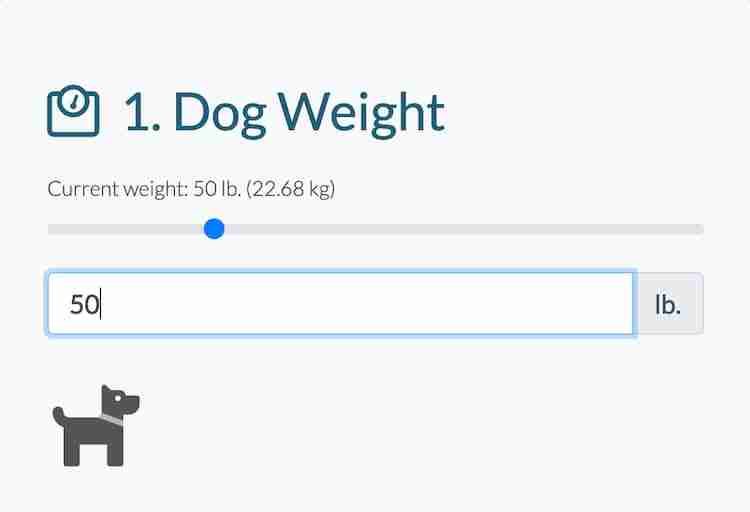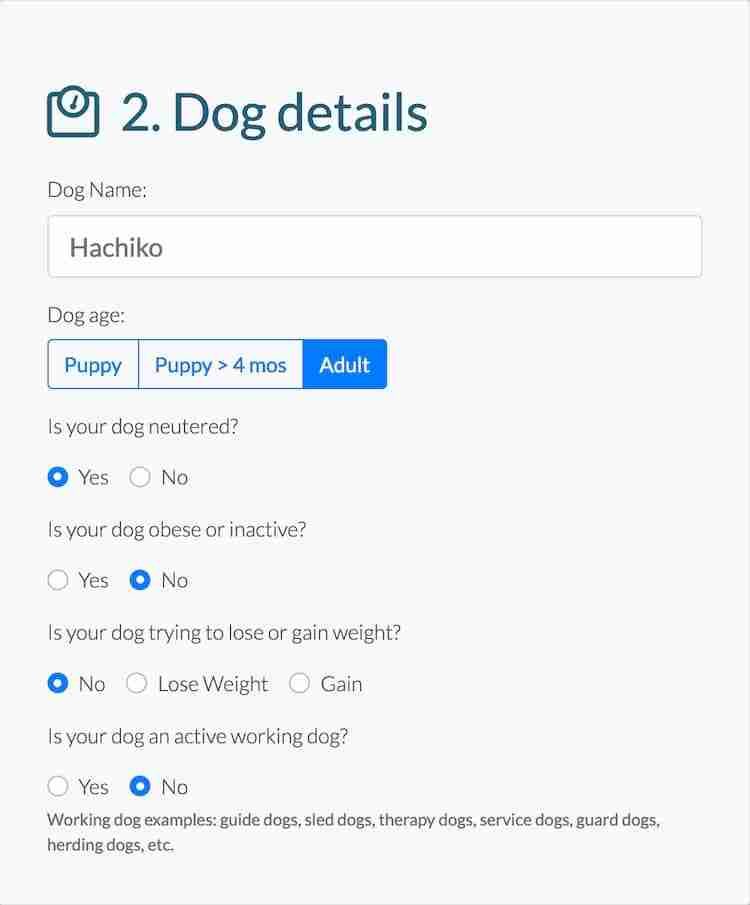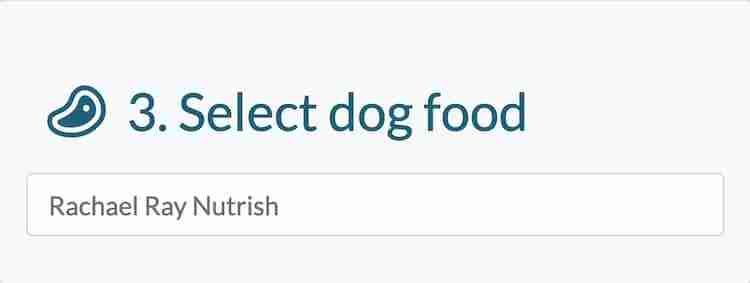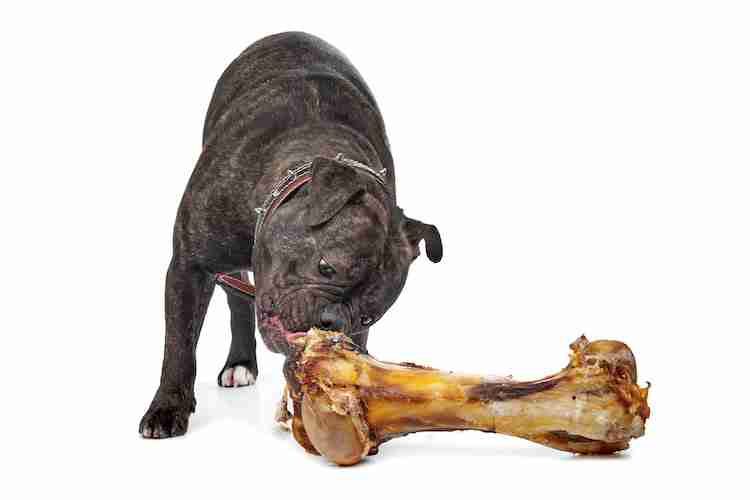Don’t know how to use a calorie calculator for dogs? The College of Veterinary Medical Center at Ohio State University offers medical care to over 18,500 pets every single year. With plenty of experience in the field, researchers at the VM have developed various nutritional information that will help pet owners take better care of their pets.
One particular result of the research by the university’s vet center is the dog food calculator. Through the calculator, dog owners will be able to see their dogs’ resting energy requirements (RER). Aside from that, you can also gain insight as to how many cups of food are recommended daily based on certain dog brands.
Also, based on this specific research, a website named Hachi designed and developed an interesting calorie calculator to help dog owners determine the amount of dry dog food, their furry pets should eat. The owners would need to input their pet’s age, body condition, and activity level. The calculator will then analyze all those information against various dog food brands on the market.
As of now, the calculator has a database that contains more than 3,000 common dog food products. It can also show live pricing for each brand on a daily, monthly, and even yearly basis.
Guide to Use a Dog Calorie Calculator Efficiently
Now that you figure out that this tool exists let’s now talk about how you can use that tool to calculate your dog’s daily calorie consumption.
Step 1
 Let’s say you own a male dog named Max, a healthy German Shepherd weighing 70 pounds. In the dog food calculator, the very first info you’ll have to input is your dog’s body weight which is, in this case, 70 pounds. You can find that option under the Dog Weight section.
Let’s say you own a male dog named Max, a healthy German Shepherd weighing 70 pounds. In the dog food calculator, the very first info you’ll have to input is your dog’s body weight which is, in this case, 70 pounds. You can find that option under the Dog Weight section.
Step 2
 The calculator will automatically show the kilogram counterpart of your dog’s ideal weight. This is to make it easier for dog owners from other countries that use the metric system.
The calculator will automatically show the kilogram counterpart of your dog’s ideal weight. This is to make it easier for dog owners from other countries that use the metric system.
In the next section, you will be asked to input your dog’s details. You simply have to input your dog’s name and answer a series of Yes or No questions. These questions are designed to help the calculator make a better analysis for your dog.
These questions, including the following:
- Whether your dog has been neutered or not?
- If he is suffering from obesity or prolonged periods of inactivity?
- Is he actively trying to lose or gain body weight?
- If he’s an active working dog or not?
Once you’re done with this part, the next step is to input the specific dog brand you’ve been feeding your dog. As mentioned earlier, the calculator’s database holds more than 3,000 well-known dog food products from various brands. This way, it will become a lot easier for you to find your preferred brand.
Step 3
 Simply input the specific brand you use, choose which particular pet food product you have, then choose its bag size. In this case, we’re going to use the 3.5lbs bag of Zero Grain natural beef dry dog food from Rachael Ray Nutrish.
Simply input the specific brand you use, choose which particular pet food product you have, then choose its bag size. In this case, we’re going to use the 3.5lbs bag of Zero Grain natural beef dry dog food from Rachael Ray Nutrish.
The calculator will then proceed to calculate how much of that dog food you should be giving your pet on a daily basis. Aside from that, it will also provide you with the following useful information.
- Where to buy the product for an affordable price (the app will recommend Chewy.com)
- The number of cups recommended for your dog per day (in this case, the app recommends 4.4 cups of the product for Max)
- The average calorie content in a cup of dry dog food (set at 389 calories)
- Your dog’s daily calorie intake (1,498 for Max)
- The average cost of the product on a daily, monthly, and yearly basis (results have shown $2.65 daily, $79.80 monthly, and $968.50 yearly)
Things To Consider
The most important factor in determining how much calories your dog needs to take on a daily basis is the weight of the pet. Of course, other factors like his age, activity level, and whether he’s been neutered or not will also affect his daily recommended calorie consumption.
You will see a breakdown of all factors that can determine your dog’s daily calorie intake, as well as the unique formula used to arrive at that computation. Aside from that, you’re also given information on how much protein your dog should consume, stating that adult dogs will need at least 1 gram of protein per pound of weight. Meanwhile, for younger and older pups, the protein requirement can be higher based on their health condition.
Most active working dogs will also need a higher daily calorie consumption compared to a non-working dog. Dogs who belong to the active working category are service dogs, police dogs, guide dogs, herding dogs, emotional support dogs and those who help humans in their day-to-day lives.
The calculator also has an extensive chart detailing the average weights of dogs based on their breed.
Why It’s Important to Monitor Your Dog’s Daily Calorie Intake
There are several risks, both in the long-term and short-term, for giving your dog more food than his daily recommended calorie intake suggests. The 2017 State of Pet Health report from the Banfield Pet Hospital revealed that overfeeding a dog can mean having to deal with increasing medical bills.
The report stated that dog owners who have an overweight dog ends up spending 17% more in medical bills compared to dog owners whose dogs have a healthy weight. Aside from that, said dog owners also spend around 25% more on medications.
However, that’s not the only alarming thing. What’s even worse is the fact that your dog will be suffering from various health conditions if he gets obese due to overfeeding. These conditions include breathing problems and arthritis, among others, which has become more prevalent as more and more dogs become obese.
The reduction in mobility due to being overweight also makes it even harder for dogs to heal from injuries and even simple wounds. Lastly, since obese dogs are more prone to living sedentary lives, this will make it even harder for them to exercise and will only increase their risk of heart disease.
Therefore, if you really love your dog, then you should make sure to monitor his daily calorie intake to prevent him from getting ill.
Signs to Know if You’re Overfeeding Your Dog

The global pet food market size was previously valued at USD 90.13 billion in 2019 and is now projected to reach over USD 127.21 billion by 2027, exhibiting a CAGR of 4.60% during the forecast period 2020 to 2027.
In some cases, you might not know that you’re already overfeeding our dog until it’s already too late. That’s when your dog is already showing visible signs of obesity. To help you with that, here are signs that will help you spot the overfeeding problem before it gets worse:
1. Your dog looks overweight
Though quite obvious, the simplest way you can tell if your mountain dog has been overfed or not is by checking his waist. While body weight is one of the common indicators, that alone won’t tell you a lot whether your dog is overweight or not. It also helps to look at his overall body shape.
Ideally, his waist should be visible from above (think of an hourglass figure). Moreover, you should easily feel his ribs and spine. If you have to press the part where your dog’s ribs are located just to feel them, then it’s likely that he’s overweight due to the layer of fat covering his body. Weight loss for your pooch can be achievable by controlling the amount of calories.
2. Your dog experiences constant itching
Another indicator that your dog is overfed is if he’s scratching his body almost constantly. It can also be due to allergic reaction and poor diet, but if you’ve been giving your dog proper nutrition but still notice this sign, then it’s most likely because he’s overfed and is becoming overweight.
On the other hand, if you’re feeding your dog the right amount, but the itching still persists, then it might be due to sensitivity to a specific type of diet. In this case, you want to consult your vet for advice.
3. Your dog has bowel issues
It’s easy to think that you’re not overfeeding your dog just because he doesn’t look anywhere near overweight at all. However, this isn’t necessarily the case. There are certain situations wherein overfeeding your dog can lead to certain health problems other than just being overweight. These include bowel issues, as well as abdominal discomfort.
Overfeeding can make your dog’s digestive system less efficient, thus resulting in upset digestion. One common indicator that you’ve overfeeding your dog is when his bowel movement during the morning is normal but gets soft at night. Chocolate toxicity can cause problems in your dog’s intestinal health, so make sure you avoid feeding your Shih Tzu or Cocker spaniels some chocolate.
4. Your dog experiences flatulence
Overfeeding can also lead to issues with flatulence. Though there are some breeds that have a degree of resistance to this issue, dogs who suffer from flatulence are most likely feed with too much food, even if those foods are designed to give them proper nutrition.
As you can see, overfeeding your dog by giving him food that exceeds his daily recommended calorie intake can lead to a slew of health conditions. Fortunately, you can prevent that issue from happening in the first place by making sure that you limit your dog’s food intake based on the recommendation from the dog food calculator.
Tips to Improve Your Dog’s Overall Health and Nutrition
A dog food calorie calculator can help you improve overall dog nutrition and dogs life. As far as weight loss dog food, we suggest checking out the Royal Canin brand.
Check out this study from the National Center for Biotechnology Information that explains in detail the maintenance energy requirements (MER) for adult dogs and cats. You can find great canine health information about the specific nutrients and calories that your dog should be eating to maintain energy levels.
The amount of food that your pet need will depend on the size and age of your pooch. Knowing the number of calories that your pooch need can prevent excessive weight gain.
A dog calorie calculator can help dogs like the Welsh Corgi, and Jack Russell Terrier to prevent overweight problems. Learn how to feed your pooch natural treats like sweet potato, which provides great health benefits to your dog’s digestive system. It is not only about food quantity, you also have to feed your pooch a complete and balanced diet.
Not knowing the number of calories your pet needs per servings is one of the main problems of overfeeding your pet. Now that you understand this, you can apply the calorie count calculator to try to achieve a perfect weight for your pooch.
Wrapping It Up
Finding a veterinary medicine care team can also be a great source to gather nutrition information for your pooch. We recommend visiting the Ohio State College of Veterinary Medical Center Calorie Calculator to get a grasp of the basic calorie requirement that your dog needs. It is a great source that shows the number of calories and protein that dogs need in their different life stages is. More so, it can help when your pooch needs to lose weight.
We have an amazing article that explains different homemade foods for dogs to improve their weight management, and to help them live a healthy life. Using a combination of a calorie count calculator with a homemade recipe guide will help the overall body condition scores of your dog. Also, knowing the exact calories per day that your dog requires can come in handy for your pet nutrition.
Last Updated on 16/03/2025 by Karen Snow
Hi! I’m Karen and a certified dog lover. As a freelance writer and blogger, I do my best to squeeze in some time with my dogs, learning more about the way they act and how I can make sure that they continue to stay well-cared for by yours truly.
My dogs have helped me through a lot, and this is my way of giving back to them! Besides animals, I also love to travel and cook, having explored my country’s restaurants and unique places. Follow me as I show you all the amazing tips and bits of information I learn along the way about our furry friends!
